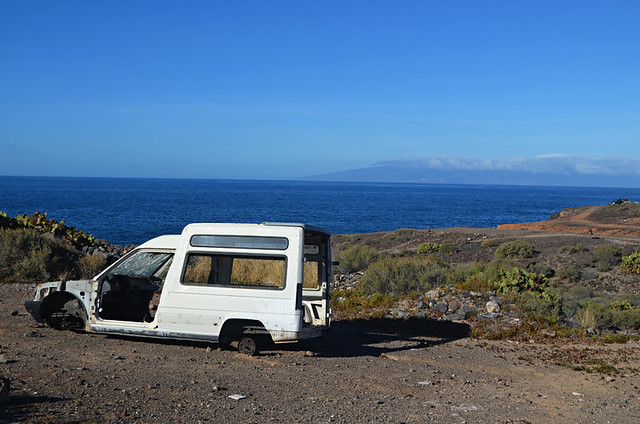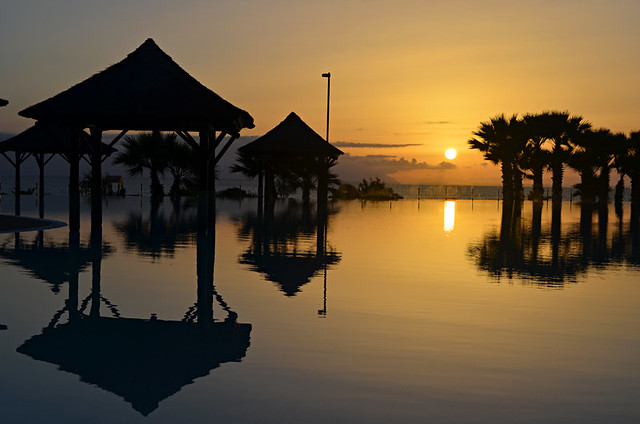There’s an old Diana Ross song which begins with the line “Do you know where you’re going to?” It’s a question which could apply to some people as they step off their planes at Tenerife South Airport.
There can occasionally be confusion about the name of the place/resort where visitors think they are staying on Tenerife, but that’s not necessarily the fault of the person themselves (not always anyway). The blame usually lies at the door of tour operators or local councils on Tenerife and is usually connected with marketing. An additional complication is how things work on Tenerife and the Canary Islands.

Local councils changing resort names
Costa Adeje is partly responsible for this one, but only because of the resort ‘brand name’ being hugely successful in marketing terms. We’ve written before about the confusion between what is Costa Adeje and what is Playa de las Américas (read the explanation here). Just last week I read comments where people offered their ‘opinions’ about which hotels are in which resort. Costa Adeje lies in Adeje’s municipality, Las Américas is located in Arona’s. Municipalities are basically councils of which there are 31 on Tenerife. Each has a clear boundary and various towns and resorts fall into different ones. It’s clear cut. Things only get blurred where marketing gets involved.

Because Costa Adeje has proved so popular as a ‘brand’ other municipalities have followed suit in recent years, also using ‘Costa’ as part of a new brand name in a bid to make their resorts sound more attractive to potential tourists. In the municipality of Granadilla de Abona, the coastal towns of El Médano and Los Abrigos now fall under the Costa Magallanes brand name. Almost overnight there can be seemingly new resort names on the scene. People who’ve been visiting Golf del Sur for years might find they’re now in a place called Costa San Miguel.

Travel companies don’t know destinations
Despite the industry they’re in, many mass tourism travel companies and tour operators often only have superficial knowledge of the destinations where they have holidays. Information on websites and in brochures is usually provided by writers who have little or no first hand knowledge of the destination they write about. As a result mistakes can be made. For example, one main UK travel company claimed there was a nature reserve full of wildlife near Playa Paraiso. That’s a different Playa Paraiso. As many poorer quality travel sites (and even some you’d expect better from) ‘borrow’ information from other websites (we regularly find variations of something we’ve written on other travel sites), when a mistake is made there can be a domino effect. As a result you’ll still find Tenerife’s Playa Paraiso has a nature reserve according to a couple of travel websites.

On other occasions a lack of local knowledge results in information which might be confusing to people looking to book a holiday. The name San Miguel de Abona is often used by travel companies now when referencing hotels in the coastal area of San Miguel de Abona (the municipality). Anyone who looks at a travel site then independently books a hotel in San Miguel de Abona could find themselves staying in the traditional town of the same name in the hills. It’s a great little town, but definitely not what someone looking for beach time would be expecting.
One of the biggest UK travel companies refers to Guia de Isora in the south west of Tenerife as an “up-and-coming resort with an old-school Canarian feel.” It’s simply inaccurate. There is no resort called Guia de Isora. Which brings me on to the way things work… and back to municipalities.

Tenerife municipalities and administrative towns
Part of the confusion about Tenerife resort names comes about because in many areas the same name can refer to what is basically two different things, like the example with San Miguel de Abona. Often the name of the traditional town which is the administrative centre of a municipality is the same name as the municipality itself. The town of San Miguel de Abona is in the municipality of San Miguel de Abona. The town of Santiago del Teide is in the municipality of Santiago del Teide and so on. You have to know the island well to understand the differences in each of the 31 municipalities. Check out online reviews and you’ll find people getting their knickers in a twist when it comes to these difference, such as the person who reviewed the picturesque little rural town of Santiago del Teide as being “Just a typical tourist modern locality without any landmarks, monuments or beautiful beaches”. At least they were right about the beaches.

It’s not just the tourist industry which gets it wrong. A few years ago, during serious forest fires in the south of Tenerife, a German newspaper reported the fires as reaching the outskirts of the town of La Orotava. The fires had actually reached the crater wall on the south side of Teide National Park, nearly 50km away from the town. But as Teide National Park is in the municipality of La Orotava and local news reports talked about the fire reaching the boundary with Orotava, a German reporter put two and two together and came up with a spectacularly wrong conclusion.
So, if you’re unsure about the exact name of the resort you’re staying in on Tenerife, don’t sweat it, it’s understandable. But not if you’re one of those people who insist on talking about staying in the famous southern tourist resort of Las Americanas. For that there is no excuse.




Excellent and well written piece.